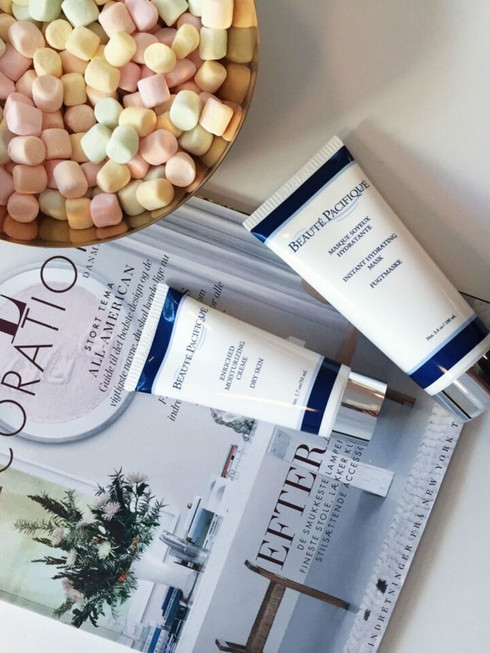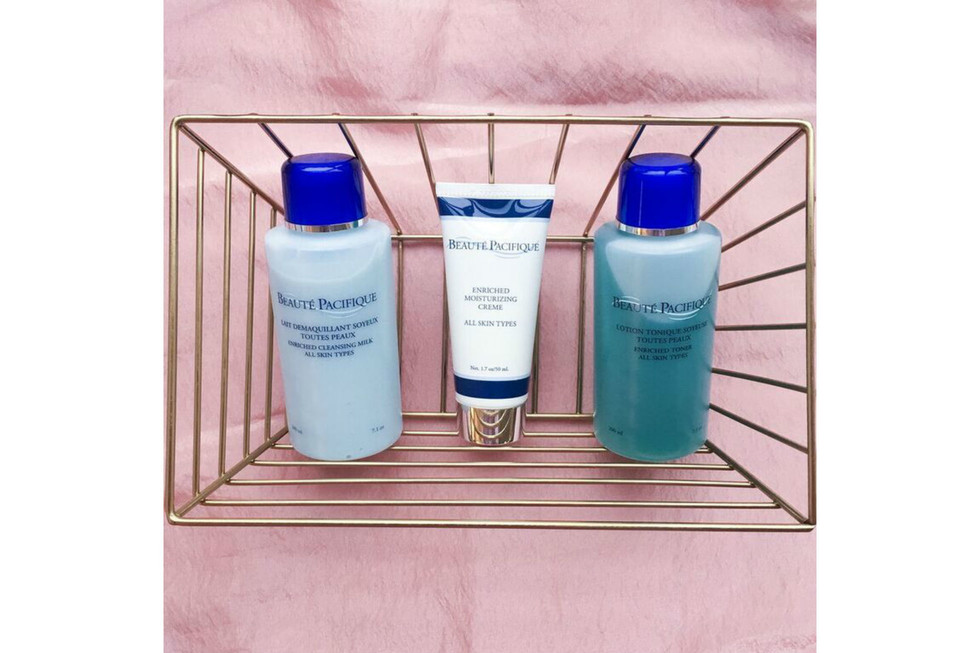BEAUTÉ PACIFIQUE: INTELLECTUAL SKIN CARE
Written by Ksenia RundinDirected by Jahwanna Berglund
Beauté Pacifique has an intellectual approach to the skin care, where engineering and dermatology have during last twenty years created a unique concept, educating their consumers. Transparency skilfully integrated into the innovation strategy of the company, bestows the consumer with an opportunity not just to access their products but to understand their own skin, almost turning their bathroom cabinet into a laboratory. We have interviewed Beauté Pacifique’s CEO Flemming K. Christensen about his approach to the business and the company’s realtionship with their customers.
The story of your business is quite unique because you approached the beauty industry from outside but with a great sense of engineer innovation. What made you enter the cosmetic field and what was the most challenging when you just started your path in 1997?
In 1986 I was co-founding a new high-tech company on the basis on a prototype ultrasound scanner for imaging the skin in-vivo. The idea of such an instrument came from a Danish dermatologist looking for more modern diagnostic techniques. Until then it was not possible to see the inside details of the skin because all existing ultrasound scanners were built to look much deeper into the body and could not show details in a thin surface of the body i.e. the skin.
This prototype was derived from the field of testing materials in which the need for detection of microscopic cracks is evident. The new scanner for skin was made at first to measure the thickness of skin tumours in vivo – an information needed for planning the depth for the surgical removal of the tumour. As the scanners became known by dermatologists all over the world many more skin pathologies were examined successfully by this new modality. Now, when scanning a diseased skin the surrounding healthy skin is always used as a reference and by looking at thousands of scans I and many dermatologists discovered that healthy skin has many ”faces” and even the skin’s status of aging and sun damage could be clearly seen by this machine!
Then I came up with the idea: What if we could develop skin care products so effective that the scanner could show the improvement and document that the skin was evidently brought to a status of less sun damage and a structure like in a younger person? This dream had to be realised and it came through when we developed the Crème Métamorphique – our very first anti-age creme based on vitamin-A esters and squalene as the nanometric delivery system. (A Beauté Pacifique patent)
You were once advised to pick a French name for your brand. Why Beaute Pacifique?
The delivery system we use to transport the active ingredients deeply into the skin was first found in Japanese sharks – caught for food in the Pacific Ocean. Now we can get squalene for special olive types but we like the idea of our brand name to state: Beauty from the Pacific Ocean.
You have a scientific approach with a great doze of transparency to the products you create, do you physically participate in the creative process, at least at the first stage when you discuss what product you need to produce?
The creative process is still my passion and I like to look at a skin problem as an engineer and then use all my energy to find ways to solve this problem. Today we have chemists and pharmacists in our team and so we can comply with all the complicated EU safety precautions. Innovations often appear when the voices of the consumers are heard and combined with the new findings in science - and it is still a task for the engineer to combine scientific knowledge with the customers’ true needs.
Helena Christensen has been a Goodwill-ambassador of Beauté Pacifique. But do you work with any influencers today (bloggers)? If yes, could you describe on what premises you decide who to collaborate with?
We have an excellent Cooperation with the Danish actress Julie Zangenberg as our ”Face” and we also work with a number of Bloggers and beauty editors. We do not expressly require certain qualifications but we try our best to keep our communications in accordance with pharmacological science and try to avoid un-substantiated political and those negative to the field of Cosmetics in general.
What do you think the beauty industry is lacking today?
I miss that the authorities in the EU-countries officially abstain from political missions and support all the many well-meaning companies that strictly follow the rules put into force by the same authorities. I am disappointed that when some politically based ”Consumer Councils” can freely preach their messages and form opinions whereby innocent consumers become afraid of the word chemistry with no science behind. It makes me sad that the Authorities let this go on and stay silent whereby the consumers can be severely mislead and the Authorities lose valuable creditability.
Could you please describe how artificial intelligence (AI) helps and affects your business today?
This question is difficult to answer because much AI is going on invisibly below the surface. We use cookies but at this time we are still novices in this field and midget customers by GOOGLE etc. I believe we are both victims and winners in this aspect and our staff is developing our skills to match the demands for survival of the fittest. So the truth is that we look at this but we are looking around but find no safe heavens. Anyway we truly believe that our customers are our best friends and as long as we provide the right and honest products as is our philosophy then we are OK and our business can expand from there.
What happens to the beauty industry in 10 years? What kind of products are we going to use? Do you think plastic surgery will be passé?
Ten years is a long time frame. I think the trade will be strongly influenced by major players such as Amazon on the WEB and the likes. I see already that price competition is killing many smaller players (Doors) and this is inevitable. On the other hand we are determined to stick to our USP is using the scanner to show the customers how their skin is doing as the “Before”-status and then later show the improvements as the “AFTER”. I firmly believe this is the right way for us to work and this is how we really struggle to prescribe the right products for the individual needs. This way/ the principle will survive and by doing so we will have a place in the hearts and minds of the intelligent and critical consumers at all times. Anyway my attitude is optimistic and I believe that we as humans will always reach out for help to maintain a healthy looking skin as a parameter of good quality of life.
























